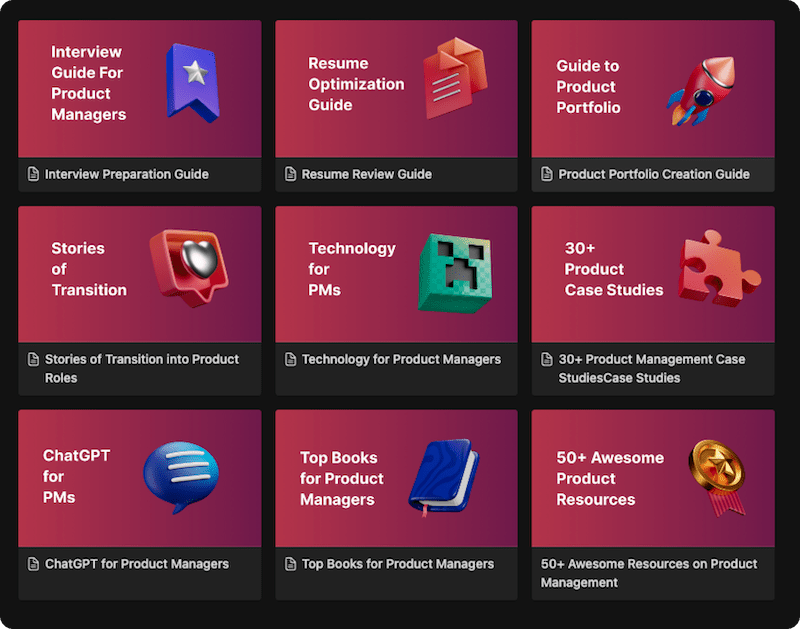Does your company have its core values written on a wall somewhere, collecting dust? You read words like “Innovation,” “Integrity,” and “Customer-First,” but the day-to-day reality feels different. Sales chases quotas, Marketing hunts for leads, and Engineering pushes code, all in their own orbits. What if your company’s most powerful value wasn’t a word on a poster, but the product itself? What if every decision, from every department, was naturally guided by the user’s experience with that product? That is the essence of a Product-Led Culture.
You’ve likely heard of Product-Led Growth (PLG) and the Product-Led Organization. But these are just the visible parts of the iceberg. The massive, invisible foundation that supports them is a product-led culture. It’s the shared mindset, the collective behaviors, and the ingrained values that truly transform a business. It’s the difference between doing product-led and being product-led.
This guide will take you beneath the surface. We’ll explore the DNA of a true product-led culture, identify its core pillars, and provide an actionable blueprint for cultivating this powerful mindset within your own team and organization.
Definition and Origin: The “Why” Behind the “How”
The concept of a product-led culture didn’t emerge from a single manifesto but grew organically out of the challenges faced by companies adopting PLG. As pioneers like Atlassian and Slack scaled, they realized that a self-serve, product-driven GTM strategy was constantly at odds with traditional, siloed departments. A sales team incentivized only by closing deals might push users to buy before they’re ready, breaking the “try before you buy” trust. A marketing team focused only on MQLs might ignore the crucial phase of in-app user activation.
It became clear that for Product-Led Growth (PLG) to be sustainable, the company’s internal culture had to mirror its external strategy. This gave rise to the idea of a product-led culture as the essential soil in which a Product-Led Organization can grow and thrive.
Why It Matters: The Benefits of a Product-First Mindset
Cultivating this culture is hard work, but the payoff is immense and creates a deep competitive moat.
- Natural Alignment and Reduced Friction: When everyone is oriented around the product’s success, departmental silos and “us vs. them” mentalities fade away. This natural Stakeholder Alignment means less time spent in contentious meetings and more time spent solving customer problems.
- Deep Customer Empathy: A product-led culture forces everyone, not just the product team, to care deeply about the user. Engineers start thinking about the customer experience, and marketers obsess over the user onboarding flow.
- Increased Innovation and Agility: This culture fosters a safe environment for experimentation. When teams are encouraged to test hypotheses, learn from failures, and follow the data, the pace of innovation accelerates dramatically.
- Higher Employee Engagement: People are more motivated when they have a clear purpose and can see the direct impact of their work. In a product-led culture, every employee understands how their contribution improves the product and helps the customer, leading to a greater sense of ownership and satisfaction.
The 5 Pillars of a Thriving Product-Led Culture
A product-led culture is built on a set of core principles and behaviors. These are the five essential pillars.
1. Obsessive Customer Empathy It’s not enough to listen to customers; you have to truly understand them. In a product-led culture, teams regularly engage with the Voice of Customer (VOC) through user interviews, feedback channels, and data. Amazon famously leaves an empty chair in some meetings to represent the customer, ensuring they are always part of the conversation.
2. Data-Informed Decision Making Opinions, hierarchy, and gut feelings are secondary to data. A product-led culture democratizes access to product analytics, empowering anyone in the company to ask questions and find answers in the user behavior data. Decisions are debated and made based on evidence, not just authority.
3. A Culture of Blameless Experimentation To build a great product, you have to be willing to be wrong. This culture encourages teams to form hypotheses, run tests (like A/B Testing), and learn from the results. Failure is not punished; it’s treated as a valuable data point that leads to better outcomes. A blameless Product Retrospective is a key ritual here.
4. Radical Collaboration in Cross-Functional Teams Innovation happens at the intersection of different disciplines. A product-led culture breaks down silos and structures teams as cross-functional teams (or pods) that include members from product, engineering, and design. These teams have shared ownership of a customer problem and work together daily to solve it.
5. Focus on Outcomes Over Output The goal is not to be busy; it’s to make an impact. This culture shifts the definition of success from “How many features did we ship?” (output) to “Did we move our key metric?” (outcome). Teams are measured by their ability to positively change user behavior and achieve business goals, like improving the retention rate or user adoption.
How to Cultivate a Product-Led Culture: The Blueprint
Culture isn’t built with a single project; it’s cultivated through deliberate, consistent actions over time.
- Start at the Top: Leadership must not only endorse the culture but actively model it. Executives should spend time in customer calls, ask questions about product data in all-hands meetings, and celebrate learnings from failed experiments.
- Hire for the Right Traits: When hiring, screen for curiosity, empathy, data literacy, and a collaborative mindset. During the interview, ask candidates about a time they used data to change their opinion or a time they failed and what they learned.
- Establish Product-Led Rituals:
- “Voice of the Customer” Sessions: Hold regular company-wide meetings where teams share clips from user interviews or feedback.
- Democratize Data: Invest in tools and training to make product analytics accessible to everyone.
- Blameless Retrospectives: Make it a standard practice after every project or sprint to discuss what went well and what could be improved in the process, not the people.
- Align Incentives and Goals: Ensure that every department’s KPIs (Key Performance Indicators) are aligned with product success. If Marketing’s goal is user activation, not just lead volume, their behavior will change. If Sales is compensated on expansion revenue from happy customers, their approach will shift from closing deals to ensuring success.
Culture in Action: Real-World Examples
Amazon: Their famous “Working Backwards” process is the ultimate product-led ritual. To start a new project, the team must first write the future press release, an FAQ, and the user manual. This forces them to start with the customer benefit and work backward, ensuring every project is grounded in a clear user-centric vision before a single line of code is written.
HubSpot: HubSpot’s public “Culture Code” emphasizes transparency, autonomy, and putting the customer first. Their internal culture of sharing information openly and trusting employees to make good decisions directly enables their successful PLG motion. They empower their teams with the context and freedom needed to solve customer problems effectively.
The Hierarchy: Culture vs. Organization vs. Growth
To master these concepts, it’s crucial to understand their relationship.
| Concept | What it Represents | Analogy |
| Product-Led Culture | The mindset, values, and beliefs. | The Soil & Climate |
| Product-Led Organization | The structure, teams, and processes. | The Greenhouse & Systems |
| Product-Led Growth | The go-to-market strategy. | The Seeds & Harvest |
You can plant PLG seeds (the strategy) in any soil. But they will only truly flourish and scale in the nutrient-rich soil of a product-led culture, supported by the structure of a product-led organization.
Conclusion
A product-led culture is not a project with a start and end date; it is the character of your organization. It’s the invisible force that guides a thousand daily decisions, ensuring that when no one is watching, every employee naturally orients themselves toward what is best for the customer and the product. It’s the deep-seated belief that the most sustainable path to growth is to build something so valuable and intuitive that it creates its own momentum. This is what separates good companies from truly legendary ones.
While the journey to becoming product-led is challenging, it is also the most rewarding work a company can undertake. It doesn’t start with a massive reorganization, but with small, consistent actions: a leader who models curiosity, a team that shares its data openly, a manager who celebrates a well-run experiment even if it fails. By committing to these principles, you are not just building a better growth strategy; you are building a more resilient, more innovative, and more human-centered company poised to win in the long run.
FAQ’s
The first step is for leadership to make a conscious and public commitment to it. This is followed by a “listening tour” – leaders should immerse themselves in customer calls and product data to build their own empathy and lead by example.
You use data. Start with a small, cross-functional pilot project. Show how a product-led approach can generate high-quality, activated leads (PQLs) that are easier and cheaper for the sales team to close. Demonstrate the positive impact on revenue and Customer Lifetime Value (LTV).
Absolutely. Any company that has a “product”—be it physical hardware, a retail experience, or a financial service—can adopt a product-led culture. The principles of customer obsession, data-informed decisions, and focusing on the user experience are universal.
Culture change is a marathon, not a sprint. It can take years to fully embed these values. However, positive changes can be felt in a matter of months through consistent effort, new rituals, and celebrating small wins.
Learn better with active recall quiz
How well do you know What is a Product-Led Culture? Let’s find out with this quick quiz! (just 10 questions)


